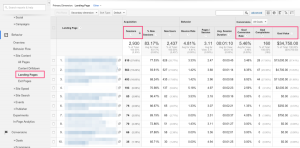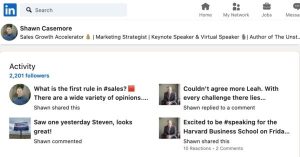We realize that customers are our best salespeople. After all, they know better than anyone the value Bizible provides and how helpful our customer success team is when there are bumps on the road to making every marketing dollar profitable.
We’ve dedicated an entire page to highlight our customer’s stories and how they’ve overcome marketing challenges by using Bizible. The page features logos, testimonials, and case studies from some of our happiest customers.
We’ve recently redesigned the page and put video at the top of our to-do list.
Some reasons for this, from a Hubspot post on visual content:
- 51.9% of marketing professionals worldwide name video as the type of content with the best ROI.
- Syndacast predicts 74% of all internet traffic in 2017 will be video.
- Shoppers who view video are 1.81X more likely to purchase than non-viewers.
- Using the word “video” in an email subject line boosts open rates by 19%, click-through rates by 65% and reduces unsubscribes by 26%.
It’s clear that the use of video marketing is beneficial and on the rise. We didn’t want to be late to the game.
So, our marketing team set out with a goal to film Bizible’s first video case study.
Now, in no way are we professional videographers, but our team members had experience in filming, editing and photography, and had access to a great camera. We were confident in our collective skills and decided to produce the video ourselves.
I’m happy to say, we love how the video turned out. Watch it below and continue reading to see what we learned along the way. Hopefully, it will help you in creating your very own video case study.
Trust your abilities– Our team members happened to have the experience and hardware necessary to produce a video, this won’t always be the case. Don’t force it if it’s not there. There are tons of companies who can help you create the video you envision if you don’t have the resources to do it yourself.
Do a practice run with coworkers– Before we ever met with our customer, we booked interviews and practiced shooting in our own office. This helped us to get the right framing for interview subjects, perfect our interview questions, and get a feel for the b-roll we’d need. Practice runs allow you to make mistakes and work out the kinks before it truly matters.
Ask questions that warrant long answers– To get the best response, for video, from your customer, you need to ask questions that will receive at least a multi-second response. It’s hard to piece together a bunch of short answers and even harder to edit sound in a way that doesn’t make it obvious you pieced together a bunch of short answers. In our video, everything we asked was at least a two-part question.
If you’re unsure, reshoot– If you have any doubt that the lighting, sound, customer response or any other thing, was not up to your highest standards, ask to reshoot the scene. It is much easier to immediately reshoot than to get back to your office and realize there was a glaring mistake that requires you to book additional time with your customer.
It’s better to have too much, than too little– In short, you can’t edit video footage that doesn’t exist.
Google is your friend– Any question you have, has probably already been asked and answered online. Do your research before shooting and if there are editing techniques you’re not sure how to do, Google them! Confession: during our own video production process, we searched “how to get rid of background noise” and “royalty free music.”
We look forward to using these experiences to create even better B2B case studies in the future and we hope you do, too.
Digital & Social Articles on Business 2 Community
(18)
Report Post




